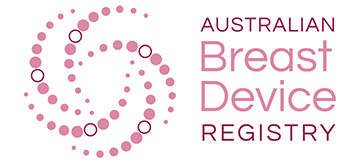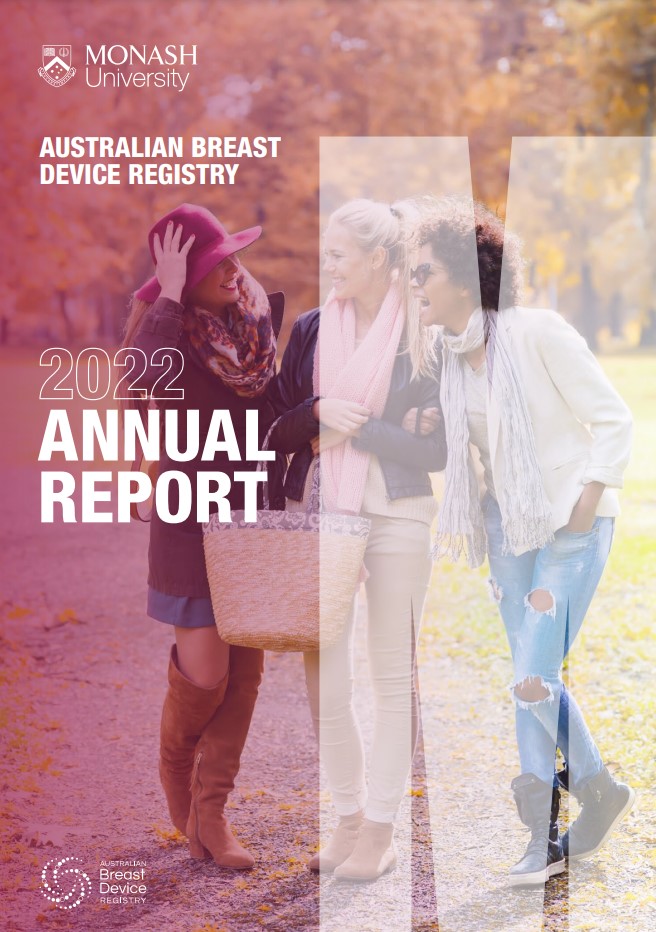ABDR releases 2022 Annual Report & #21 Newsletter
December 15, 2023
Australian Breast Device Registry (ABDR) Releases 2022 Annual Report
The Australian Breast Device Registry (ABDR) is pleased to release its 2022 Annual Report, which provides a comprehensive analysis of breast device procedures captured by the registry. This report marks the ABDR’s 7th annual report and reflects the registry’s collaboration with key stakeholders to drive patient safety.
The ABDR 2022 Annual Report draws on more than 100,000 procedures and 171,092 breast devices to provide data-driven insights on device usage, surgical elements and techniques, and revision rates in both cosmetic and reconstructive domains. These data were captured between January 2012 and 31st December 2022.
Additional to the highlights below, for the first time, the ABDR 2022 Annual Report graphs variations in intra-operative techniques, and analyses outcomes 7 years post insertion of primary devices (implants, tissue expanders and matrix/mesh).

Highlights
- A major milestone of 100,114 procedures included in the registry, inclusive of 13,287 procedures captured in 2022 alone
- A very low opt-out rate of less than 1%, suggesting high consumer acceptance of the registry
- A trend towards more explant-only procedures captured by the registry
- A high level of completeness for breast device insertions, with opportunities to enhance collection of revisions and explant procedures
- Contribution from health care facilities in all states and territories, except public hospitals in Western Australia
Snapshot of cosmetic surgery data
- The ABDR captured 8,831 cosmetic procedures in 2022; with the most common age group for device insertions being 20 – 24 years
- Smooth and round breast implants were most commonly used in 2022
- Just 0.3% of cosmetic surgery participants in the registry had more than one revision procedure recorded
Snapshot of reconstructive surgery data
- The ABDR captured 3,103 reconstructive procedures in 2022; with the most common age group being 50 – 55 for post-cancer related device insertions
- Risk-reducing procedures involving breast devices declined as a proportion of total reconstructive surgery over time
- Very few reconstructive participants (2.6%) in the registry had more than one revision procedure recorded
Breast Implant Associated Anaplastic Large Cell Lymphoma (BIA-ALCL) in Australia
Five new confirmed cases of BIA-ALCL, a rare cancer of the immune system, were reported to the Registry in 2022. Most of the 64 total BIA-ALCL cases captured by the ABDR, were diagnosed at 7-10 years post insertion, with seroma/haematoma the most common clinical issue identified at the time.
Acknowledgements
The ABDR gratefully acknowledges the many Australians who enable the registry to retain their device and surgery details, as well as surgeons, clinicians, nurses and administrative staff at healthcare service providers, who facilitate data being recorded into the registry. We thank members of all ABDR governance committees, particularly registry Clinical Leads, whose clinical expertise guides activities, including reporting.
This registry is led by Monash University, with support from the Australian Society of Plastic Surgeons (ASPS), Australasian College of Cosmetic Surgery and Medicine (ACCSM), Breast Surgeons of Australia and New Zealand (BreastSurgANZ) and the Therapeutic Goods Administration (TGA).
The ABDR is supported by funding from the Australian Government, Department of Health and Aged Care, under the National Clinical Quality Registry Program.

